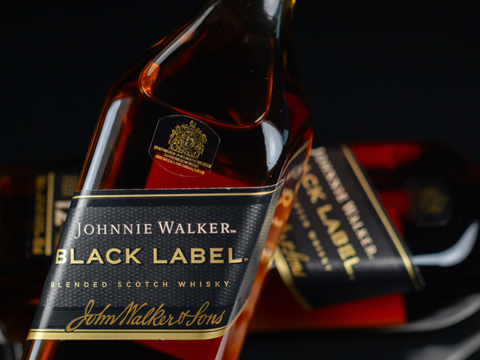
After revising its environmental targets, Diageo now aspires for 50% recycled content in its packaging by 2030 and net zero emissions by 2050 – but no longer sets its sights on a 10% reduction in packaging weight or 100% renewable energy.
As of FY 2025, the company claims to have exceeded its 35% recycled content goal for PET bottles in particular.
“Our recycled content in plastic bottles was 43% versus a target of 35% which we had reset in fiscal 24 from 40% due to supply constraints, technical barriers and legislation changes,” reads Diageo’s Annual Report. “We overcame these challenges to drive a 21% increase within the year and will continue to plan for incremental improvements in future years.”
While it originally set an overall target of 60% recycled content in its packaging by 2030, it has now revised this target to 50% – a change it attributes to its latest forecasts for cullet availability.
“Our total packaging recycled content inclusion increased to 46% versus our 2030 target of 50%,” the report asserts, marking a 4% increase in recycled input materials since FY 2024. “We continue to see year-on-year improvement across our packaging categories, primarily driven by recycled content in glass bottles.
“Increasing glass cullet availability through improved collection and sorting schemes in partnership with our glass vendors continues to be a focus area for the business and we are engaging our key packaging suppliers across a comprehensive range of business objectives.”
In its ESG Reporting Index, it reiterates: “We continue to seek opportunities to access quality post-consumer cullet both through our direct collection of glass bottles and through industry-wide collaboration to improved waste collection and circular solutions.”
Among Diageo’s reported sustainability initiatives this year is the reduction of the glass bottle weight for various alcohol brands, including its Baileys, Cîroc, and core size Johnnie Walker Gold, Green, and Double Black Label products.
Even so, the company plans to sunset its goal to reduce its overall packaging weight by 10%.
“Given that reducing the absolute weight of our packaging competes with volume growth, we will no longer be reporting against a specific packaging weight reduction target,” its Annual Report explains. “However, we will continue pursuing lightweighting projects which are good for both the business and emissions reduction, reporting on examples each year.”
Other revisions include its carbon reduction targets, with greenhouse gas emissions set to represent 33% of its total Scope 3 value chain emissions. Increasing its recycled content, reducing its single-use packaging, lightweighting its packaging, and deploying and scaling circular business models are all expected to reduce the carbon footprint of its value chain.
Five years after Diageo’s Spirit of Progress action plan was announced, president, global supply chain and procurement and chief sustainability officer Ewan Andrew states that “we have better data, deeper insights, and a clearer view of the practical realities to deliver net zero.”
Now it plans to reduce its Scope 1 and 2 emissions by 50% by 2030, reach net zero in direct operations by 2040, lower scope 3 emissions by 26% by 2030, and reach net zero across scopes 1, 2, and 3 by 2050.
“Our revised carbon targets now have an extended delivery timeline, a fiscal 2022 base, and have been validated by the Science Based Targets initiative for the near and long term,” Andrew explains. “Our carbon targets are still aligned to the 1.5 degree warming pathway, and we have reduced our recycled content target to be more in line with our industry peers.”
These carbon targets will also replace its 100% renewable energy goal, with the retired goals set to “simplify our reporting and bring greater focus to our delivery.” Similarly, updating its carbon and packaging goals is set to give the company “a stronger, more credible path forward.”
Announcing the updated targets in a YouTube video, Andrew details: “In 2020, when we set our ambitious environmental sustainability goals as part of our Spirit of Progress action plan, we didn’t have all the answers. But we knew progress would require innovation, long-term commitment, and supportive policy environments.
“I’m proud of our accomplishments to date, but progress remains challenging, and climate resilience is complex. Key systems like regulation, policy frameworks, and infrastructure have not advanced at the scale required, or as quickly as needed.
“And collaboration remains essential. We cannot achieve our goals in isolation.
“We’ve made some great progress on some tough targets. We’ve achieved our 2030 goal of launching five regenerative agriculture programmes, we’ve surpassed our goal to provide wash facilities in communities near our sites and local sourcing areas, and we’re on track to replenish more water than we use in our operations in water-stressed areas by 2026.
“On carbon, more than 85% of the electricity we use is now renewable.
“Sustainability has never been simple, but we’re clearer than ever on what it takes to achieve our objectives with renewed focus and expert knowledge. By acting on, delivering, and reviewing our commitments, we are taking steps to make our business more resilient while preserving our license to operate and grow.”
In similar news, we recently reflected on Diageo’s collaboration with PA Consulting and PulPac to trial a fibre-based bottle for its Baileys’ Original Irish Cream Liqueur product as part of its ‘grain-to-glass sustainability’ efforts. The solution was set to eliminate water use and significantly reduce energy consumption.
We also heard from Neil Osment, managing director of packaging market research company NOA, about the recent trend of big brands downscaling their sustainability targets; he discussed the recurring roadblocks and suggests ways to overcome them.
If you liked this story, you might also enjoy:
The ultimate guide to the Packaging and Packaging Waste Regulation in 2025
How are the top brands progressing on packaging sustainability?
Everything you need to know about global packaging sustainability regulation in 2025
The key to increasing the use of reusable packaging in supermarkets

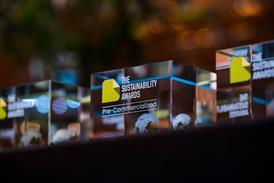
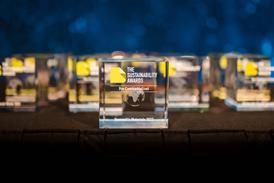
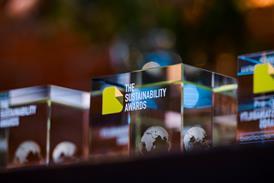

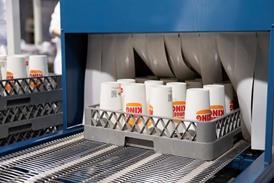










No comments yet